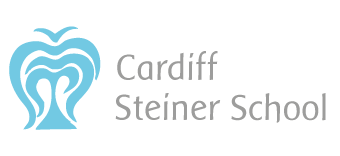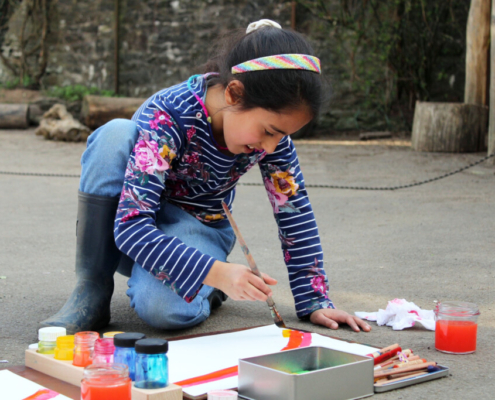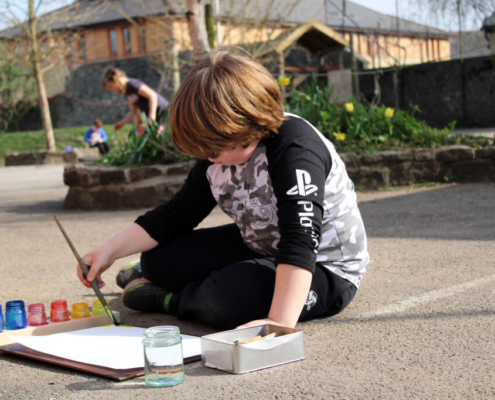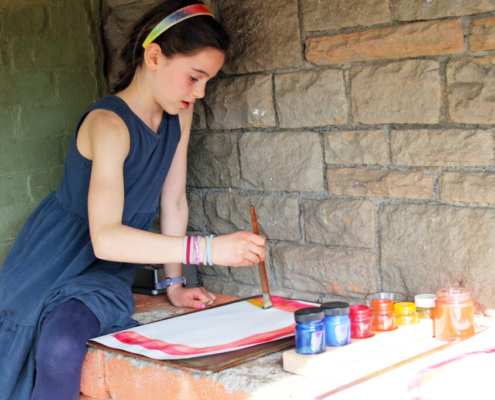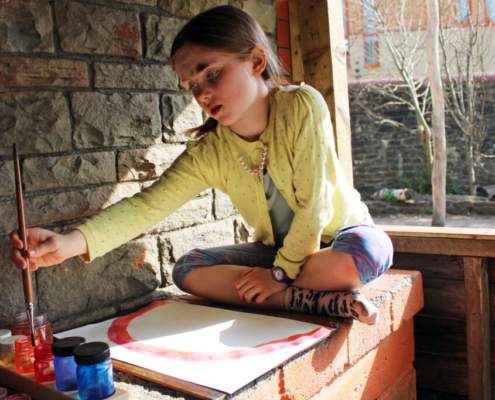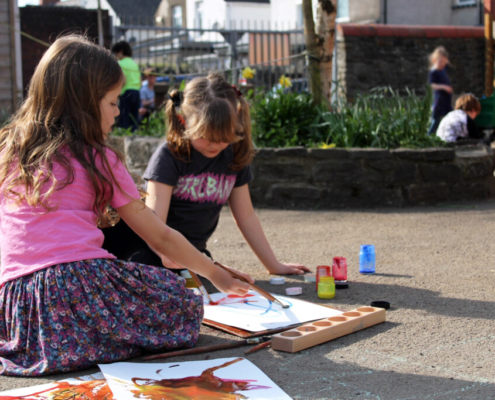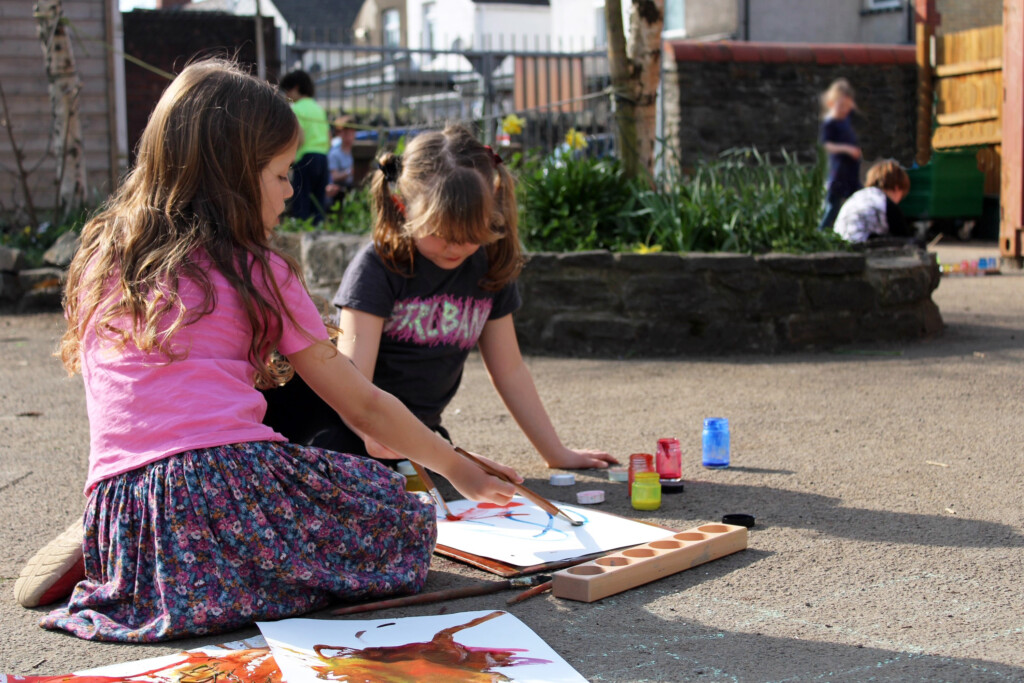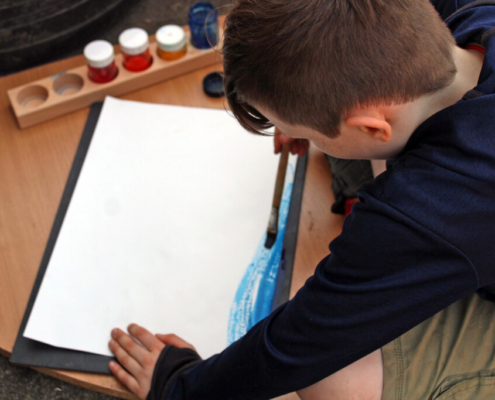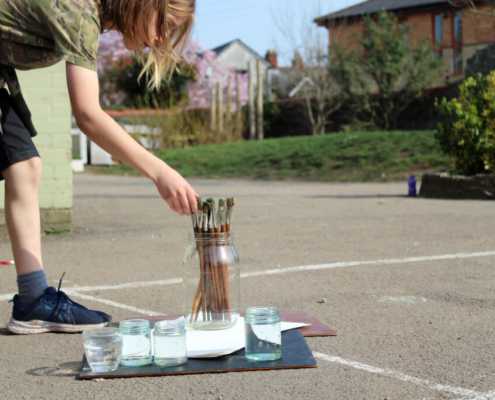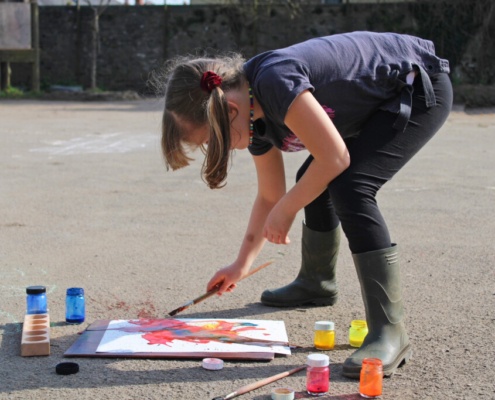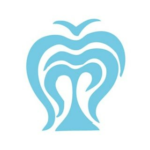Wet-on-Wet Painting Outdoors
24 March 2022
Class Ty Haul are making the most of this beautiful weather to take their weekly wet-on-wet painting lessons outdoors. The beautiful colours of wet-on-wet painting always catch the eye of visitors to Cardiff Steiner School. Find out more about this sensory, meditative approach below.
What is wet-on wet painting?
It’s simple – wet watercolour paint is laid on wet paper, allowing the colours to flow and blend into each other in beautiful, unexpected ways.
“One of the best experiences of colour for the young child comes through painting with watercolours on wet paper. Colours are in their own true element in water”
Rahima Baldwin (Author of You Are Your Child’s First Teacher)
Why do we do it?
Wet-on-wet painting is a wonderful introduction to the world of colour for younger children. The wet paper allows the colours to flow and change – it is hard to create a specific form. In this way it focuses on the process – the young child’s experience and discovery of colour – rather than the end product of creating a picture. The watercolors don’t limit the child to preciseness in form, shape or outline, so many children feel more free to create and experiment.
“Wet-on-wet painting allows for fluid mixing and movement on the paper. Colours bleed one into another, they move and creep and spread. They play, they grow, they seem to have life.”
Donnie Webber
Starting with colour in Kindergarten
A core aspect of Steiner Kindergarten education is that learning comes through imitation, imagination, and sensory experience, rather than technique or instruction. Wet-on-wet painting is brought in the same way, Rather than instructing the child, the Kindergarten teacher paints alongside them. The teacher initially shows each child how to treat the materials with respect, how to set up the paper on the board, dip the brush in the paint, wipe excess paint back into the paint jar, how to rinse the brush in between colors and then pat the brush dry on the sponge. Each painting session has a rhythm, including setting and cleaning up, but children are free to paint as they want within that structure. At the end the children and teachers look at the colors and take take time to enjoy them together. Dry paintings are taken home or re-used in Kindergarten as cards, lanterns, nature table backgrounds etc.
Kindergarten children will often start by painting with only one or two colours at a time with varying degrees of intensity, allowing some white to shine through here and there. This gives young children time to explore each colour on its own and also lowers frustration as the colours will always mix beautifully. Moving on to colour combinations the children experience the excitement of discovering how secondary colours are formed.
“Rather than showing or telling children “Here’s some blue and here’s some yellow, let’s mix them together and get green”, the child discovers the magic for themselves. “Look! There’s ORANGE in my jar!” a wonderful discovery for a child to make, no explanations are necessary.”
Sarah Baldwin
The process gives children a much slower, experiential involvement in colour, in a meditative, calming way, allowing them to feel the effects and qualities of colour within themselves (warm or cool).
Moving on with colour…
As children move on into the Lower School the Class Teacher imaginatively presents colour exercises, appropriate to their age. In Class 1 for example the children may listen to a story or poem that gently ‘guides’ a painting but still leaves room for each individual child’s expression and feeling. The teacher’s task is to embody the conversations of the colours with each other in a language felt and understood by the children. “How far does the lively, joyous yellow want to radiate into the surrounding white? How happily and safely protected it feels when surrounded by blue. If they meet and make a third colour, green, it is not dense or heavy, but more like a gentle bridge between its two friends”.
Children will all learn watercolour painting to a high standard. Up to Class 3 painting is essentially abstract, yet through stories and practice they will have unconsciously mastered key techniques. This ability is built upon in Class 4 when children begin figurative work and painting is linked to nature studies and the topics of the Main Lessons. From Classes 5–8 children work with ever subtler nuances of colour and come to understand chiaroscuro, the study of light and dark, and perspective through watercolour as well as working with charcoal and chalk, pastels, glazes and gouache or acrylic paint, depending on the project.
Consider a Steiner Education for your child and contact a Steiner School near you today. Ready to learn more? Come and find out whether Cardiff Steiner School is right for your child.
